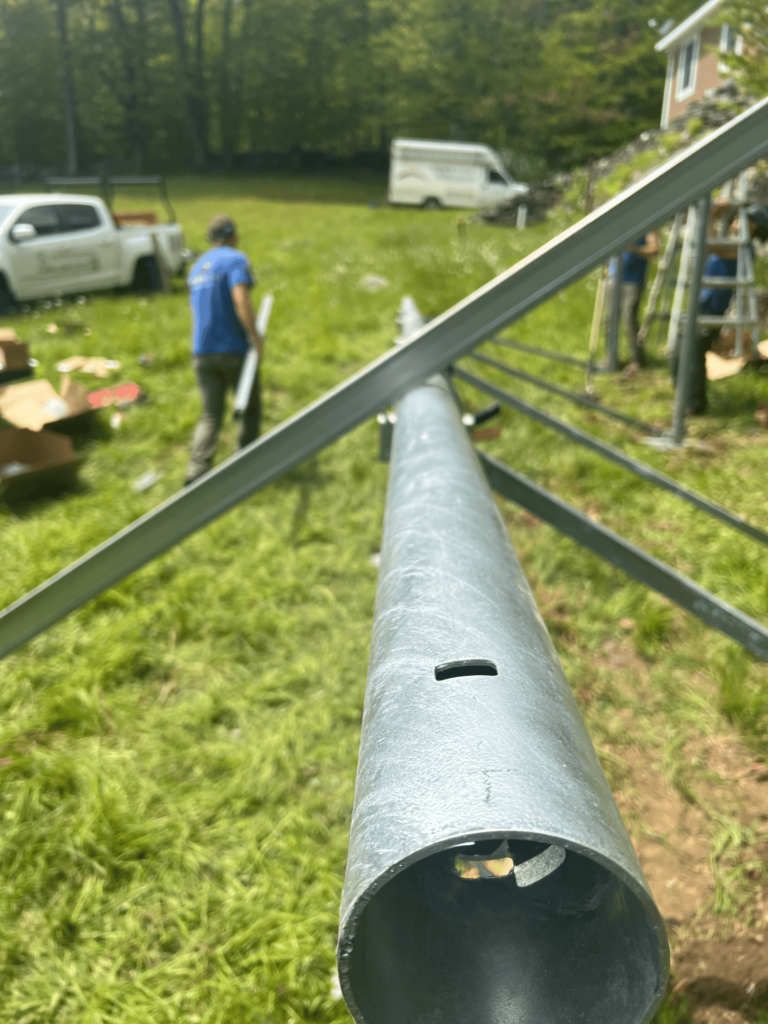Elevating Energy Efficiency: Exploring Innovative Solar Racking Solutions
As solar energy becomes essential to our global energy strategy, the demand for effective and efficient solar installations is rising. One of the critical aspects of any solar setup is the racking system, which supports and secures solar panels. With various options available, understanding the differences and benefits of each can help users optimize their solar investments. This article will delve into ground-mount solar, solar racking for ground-mount, fix-tilt solar racking, canopy solar racking, and single-axis tracker systems.
The Importance of Solar Racking Systems
Solar racking systems ensure solar panels are installed securely and correctly positioned to maximize sunlight exposure. These systems provide the necessary support to withstand environmental factors such as wind and snow while optimizing the angle of the panels for maximum energy capture. Choosing the right racking system can significantly affect a solar installation’s efficiency, cost, and longevity.
1. Ground Mount Solar
Ground-mount solar systems are popular for larger solar installations, especially in areas with ample land. These systems are mounted on the ground rather than rooftops, allowing for larger arrays and more flexible design options.
Benefits of Ground Mount Solar
- Space Efficiency: Ground-mount systems can cover a larger area, enabling the installation of larger solar arrays, which can produce more energy.
- Ease of Maintenance: Ground-mounted panels generally make maintenance and inspections easier than roof-mounted systems, making it simple to access and service the panels.
- Adjustable Angles: These systems can be designed with adjustable angles, allowing optimal positioning throughout the year to maximize energy capture.
Ground mount systems are especially effective for commercial applications or large-scale solar farms, where space and energy needs are significant.
2. Solar Racking for Ground Mount
Solar racking for ground mount is specifically designed to support solar panels installed on the ground. These racking systems provide the stability and security necessary to ensure that solar panels can withstand various weather conditions.
Key Features of Solar Racking for Ground Mount
- Durability: Ground mount racking systems are built to endure harsh weather conditions, providing long-lasting support for solar installations.
- Customization: These systems can be tailored to fit a project’s specific needs, including varying heights and angles based on site conditions.
- Material Options: Ground mount racking is often available in various materials, including aluminum and galvanized steel, providing users with options that suit their budget and durability requirements.
By selecting the right solar racking for a ground mount, users can ensure a solid foundation for their solar energy systems.
3. Fix Tilt Solar Racking
Fix tilt solar racking is one of the most straightforward racking systems. It holds solar panels at a fixed angle, ensuring they are positioned for optimal sun exposure.
Advantages of Fix Tilt Solar Racking
- Cost-Effective: This type of racking is often less expensive to install than other systems, making it an attractive option for budget-conscious projects.
- Low Maintenance: With no moving parts, fix tilt solar racking requires minimal maintenance, reducing long-term costs.
- Reliable Performance: Fixed systems are known for their stability, reducing the risk of mechanical failures compared to more complex racking systems.
This option is ideal for users who prefer a reliable, low-maintenance solution for their solar installations.
4. Canopy Solar Racking
Canopy solar racking systems are designed to support solar panels above existing structures, such as parking lots or walkways, creating shaded areas while generating renewable energy.
Benefits of Canopy Solar Racking
- Space Utilization: This racking system allows users to utilize underutilized spaces, such as parking lots, by turning them into energy-producing areas.
- Enhanced Protection: Canopy systems provide shade for vehicles and people, making them ideal for areas where sun exposure is a concern.
- Dual Purpose: These systems serve a dual function—providing shade while generating solar power, making them an efficient use of space.
Canopy solar racking is an excellent solution for businesses or municipalities looking to maximize their property while promoting sustainability.
5. Single Axis Tracker
Single axis tracker systems allow solar panels to move along a single axis, following the sun’s path throughout the day. This technology maximizes sunlight exposure and enhances energy production.
Advantages of Single Axis Tracker Systems
- Increased Energy Output: By adjusting the angle of the panels throughout the day, single axis trackers can increase energy capture by 20-30% compared to fixed systems.
- Flexible Design: These systems can be tailored to various landscapes and project sizes, offering installation flexibility.
- Advanced Technology: Many single axis trackers have advanced monitoring systems that optimize performance and energy production.
For large-scale solar installations that aim to maximize efficiency, single-axis trackers offer a high-performance solution that can significantly boost energy output.
Conclusion
Selecting the right racking system in solar energy ensures optimal performance and efficiency. From ground mount solar systems to solar racking for ground mount, fix tilt solar racking, canopy solar racking, and single-axis tracker solutions, each option presents unique advantages that cater to various project needs. By understanding these systems and their benefits, users can make informed decisions that enhance their solar energy investments, promoting a cleaner and more sustainable future. Investing in the right solar racking solution supports energy production and contributes to the broader shift toward renewable energy sources.

